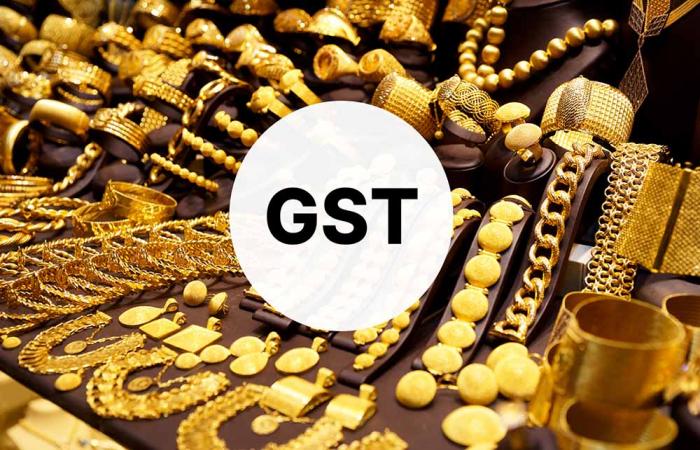Gold has long been considered a valuable asset. It is a popular investment choice and a symbol of wealth. In many countries, the Goods and Services Tax (GST) is applicable on gold purchases. This article explores how much GST applies to 24-carat gold. We will cover various aspects, including tax rates, implications for buyers, and the overall impact on the gold market.
What is 24-Carat Gold?
24-carat gold is pure gold. It contains 99.9% gold content, making it the highest purity level available in gold jewelry and investment bars. Because of its purity, 24-carat gold is more expensive than lower carat gold.
Gold purity is measured in karats. A higher karat means more gold content. For example, 18-carat gold contains 75% gold. Thus, 24-carat gold is the preferred choice for those looking for a high-quality investment.
GST Rate on Gold
In India, the GST rate on 24-carat gold is currently set at 3%. This rate applies to both gold jewelry and gold bars. The introduction of GST aimed to simplify the taxation process. It replaced various indirect taxes previously levied on gold.
The 3% GST on gold is calculated on the total value of the gold being purchased. This includes the cost of the gold itself and any making charges associated with the jewelry. Understanding this tax is essential for buyers, as it affects the overall cost of gold purchases.
Implications for Buyers
When purchasing 24-carat gold, buyers must consider the GST. This tax can significantly impact the final price. For example, if the market price of 24-carat gold is ₹50,000 per 10 grams, the GST would add ₹1,500 to the total cost. Therefore, buyers should factor in this additional cost when budgeting for their gold purchases.
It’s important to note that GST is not included in the price of gold displayed in stores. Buyers should always inquire about the total price, including GST, before making a purchase. This ensures transparency and helps avoid any surprises at the time of payment.
How GST Affects the Gold Market
The introduction of GST has had a significant impact on the gold market. Before GST, gold was subject to various state and central taxes. This made it complicated for buyers and often resulted in higher costs.
With a uniform GST rate of 3%, the gold market became more standardized. This change has made it easier for buyers to compare prices across different dealers. It has also reduced the chances of tax evasion, as the GST system is more transparent and trackable.
Moreover, the GST on gold has led to an increase in formal purchases. Buyers who previously opted for unaccounted or informal sources are now more inclined to purchase from authorized dealers. This shift helps the government collect more tax revenue and enhances the credibility of the gold market.
Exemptions and Exceptions
While GST applies to most gold purchases, there are some exemptions and exceptions. For instance, gold bars and coins with a purity of 24 carats or more are subject to GST. However, specific religious institutions may be exempt from GST when purchasing gold for ceremonial purposes.
Additionally, gold purchases made during certain festivals may also enjoy reduced rates or exemptions. Buyers should stay informed about any special promotions or policies that may affect their purchases.
How to Calculate GST on Gold
Calculating GST on gold is straightforward. Here’s how to do it:
Determine the Gold Price: Find the current market price of 24-carat gold per gram or per 10 grams.
Calculate the Total Price: Multiply the price by the quantity you intend to purchase.
Calculate GST: Multiply the total price by the GST rate (3%).
Total Cost: Add the GST to the total price to find the final cost.
For example, if you want to buy 20 grams of gold priced at ₹5,000 per gram:
Total Price = 20 grams × ₹5,000 = ₹100,000
GST = ₹100,000 × 0.03 = ₹3,000
Total Cost = ₹100,000 + ₹3,000 = ₹103,000
Investment Considerations
Investing in gold involves more than just understanding GST. Buyers should consider the long-term value of gold. Historically, gold has been a safe-haven asset. Its value tends to rise during economic uncertainty.
When investing in 24-carat gold, consider the following factors:
Market Trends: Keep an eye on global gold prices. Market fluctuations can affect your investment’s value.
Storage Costs: Physical gold requires secure storage. Consider any additional costs associated with safeguarding your investment.
Liquidity: Gold is a liquid asset, but selling it may incur costs. Understand the terms of resale before making a purchase.
Tax Implications: Apart from GST, be aware of capital gains tax when selling your gold in the future.
See also: Is 22 Carat Gold and 916 Gold the Same?
Conclusion
The GST on 24-carat gold stands at 3%. This tax applies to both jewelry and investment bars. Buyers must factor in this tax when budgeting for gold purchases.
Understanding the implications of GST helps buyers make informed decisions. The introduction of GST has standardized the gold market and encouraged formal transactions.
Investing in gold remains a popular choice for many. While GST is an important consideration, it is just one aspect of a larger investment strategy. By keeping these factors in mind, buyers can navigate the gold market effectively and enjoy the benefits of their investment.
In summary, while GST may add to the cost of purchasing 24-carat gold, it also brings transparency and structure to the gold market. Understanding this tax can help buyers make the most of their investment.
Related topics:

